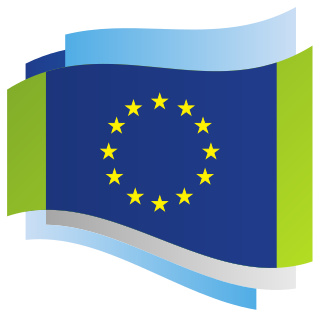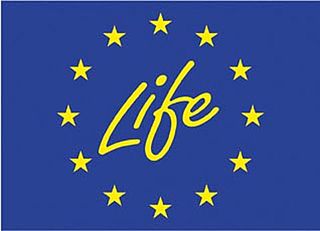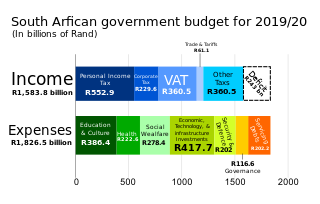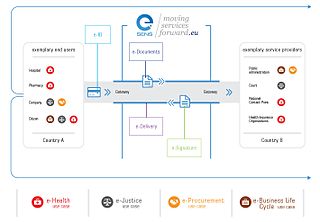
The Common Agricultural Policy (CAP) is the agricultural policy of the European Commission. It implements a system of agricultural subsidies and other programmes. It was introduced in 1962 and has since then undergone several changes to reduce the EEC budget cost and consider rural development in its aims. It has however, been criticised on the grounds of its cost, its environmental, and humanitarian effects.

The political structure of the European Union (EU) is similar to a confederation, where many policy areas are federalised into common institutions capable of making law; the competences to control foreign policy, defence policy, or the majority of direct taxation policies are mostly reserved for the twenty-seven state governments. These areas are primarily under the control of the EU's member states although a certain amount of structured co-operation and coordination takes place in these areas. For the EU to take substantial actions in these areas, all Member States must give their consent. Union laws that override State laws are more numerous than in historical confederations; however, the EU is legally restricted from making law outside its remit or where it is no more appropriate to do so at a state or local level (subsidiarity) when acting outside its exclusive competences. The principle of subsidiarity does not apply to areas of exclusive competence.

The European Defence Agency (EDA) is an agency of the European Union (EU) that promotes and facilitates integration between member states within the EU's Common Security and Defence Policy (CSDP). The EDA is headed by the EU High Representative for Foreign Affairs and Security Policy, European Commission’s Vice President (HR/VP), and reports to the Council. The EDA was established on 12 July 2004 and is based in Brussels, Belgium, along with a number of other CSDP bodies.

The economy of the European Union is the joint economy of the member states of the European Union (EU). It is the second largest economy in the world in nominal terms, after the United States and the third one in purchasing power parity (PPP) terms, after China and the United States. The European Union's GDP estimated to be around $19.35 trillion (nominal) in 2024 representing around one sixth of the global economy. Germany has the biggest national GDP of all EU countries, followed by France and Italy.
Statistics in the European Union are collected by Eurostat.
The UK rebate was a financial mechanism that reduced the United Kingdom's contribution to the EU budget in effect since 1985. It was a complex calculation which equated to a reduction of approximately 66% of the UK's net contribution – the amount paid by the UK into the EU budget less receipts from the EU budget. Based on a net contribution of €11.7 (£9.6) billion in 2016, the UK Treasury estimated the 2017 rebate amounted to €6.6 (£5.6) billion reducing the ultimate UK contribution for the 2017 budget to €10.4 (£8.9) billion. Although the rebate was not set in the EU treaties, it was negotiated as part of the Multiannual Financial Framework (MFF) every seven years and had to be unanimously agreed.

The European Structural and Investment Funds are financial tools governed by a common rulebook, set up to implement the regional policy of the European Union, as well as the structural policy pillars of the Common Agricultural Policy and the Common Fisheries Policy. They aim to reduce regional disparities in income, wealth and opportunities. Europe's poorer regions receive most of the support, but all European regions are eligible for funding under the policy's various funds and programmes. The current framework is set for a period of seven years, from 2021 to 2027.
In France, taxation is determined by the yearly budget vote by the French Parliament, which determines which kinds of taxes can be levied and which rates can be applied.

The Multiannual Financial Framework (MFF) of the European Union, also called the financial perspective, is a seven-year framework regulating its annual budget. It is laid down in a unanimously adopted Council Regulation with the consent of the European Parliament. The financial framework sets the maximum amount of spendings in the EU budget each year for broad policy areas ("headings") and fixes an overall annual ceiling on payment and commitment appropriations.

The Directorate-General for International Partnerships is the European Commission department responsible for international development policy. It operates under the authority of the European Commissioner for International Partnerships, Jutta Urpilainen.

The European Development Fund (EDF) is the main instrument for European Union (EU) aid for development cooperation in Africa, the Caribbean, and Pacific countries and the Overseas Countries and Territories (OCT). Funding is provided by voluntary donations by EU member states. Until 2020 the EDF was subject to its own financial rules and procedures, and was managed by the European Commission (EC) and the European Investment Bank. The EDF has been incorporated into the EU's general budget as of the 2021–2027 multi-annual financial framework.
Taxation in Greece is based on the direct and indirect systems. The total tax revenue in 2017 was €47.56 billion from which €20.62 billion came from direct taxes and €26.94 billion from indirect taxes. The total tax revenue represented 39.4% of GDP in 2017. Taxes in Greece are collected by the Independent Authority for Public Revenue.
On 26 November 2008, the European Commission proposed a European stimulus plan amounting to 200 billion euros to cope with the effects of the global financial crisis on the economies of the members countries. It aims at limiting the economic slowdown of the economies through national economic policies, with measures extended over a period of two years.
Gross national income at market prices in the European Union of 27 Member States (GNI) amounted to EUR 44.778 per inhabitant in 2020.

The LIFE programme is the European Union's funding instrument for the environment and climate action. The general objective of LIFE is to contribute to the implementation, updating and development of EU environmental and climate policy and legislation by co-financing projects with European added value. LIFE began in 1992 and to date there have been five phases of the programme. During this period, LIFE has co-financed some 4600 projects across the EU, with a total contribution of approximately 6.5 billion Euros to the protection of the environment and of climate. For the next phase of the programme (2021–2027) the European Commission proposed to raise the budget to 5.45 billion Euro.

Taxation may involve payments to a minimum of two different levels of government: central government through SARS or to local government. Prior to 2001 the South African tax system was "source-based", where in income is taxed in the country where it originates. Since January 2001, the tax system was changed to "residence-based" wherein taxpayers residing in South Africa are taxed on their income irrespective of its source. Non residents are only subject to domestic taxes.

On 6 May 2015, the European Commission, led at the time by Jean-Claude Juncker, established the Digital Single Market strategy, intended to remove virtual borders, boost digital connectivity, and make it easier for consumers to access cross-border online content across the European Union. The Digital Single Market, which is one of the Commission's 10 political priorities, aims to fit the EU's single market for the digital age, moving from 28 national digital markets to a single one, and then opening up digital services to all citizens and strengthen business competitiveness in the digital economy. In other words, the Digital Single Market is a market characterized by ensuring the free movement of people, services and capital and allowing individuals and businesses to seamlessly access and engage in online activities irrespective of their nationality or place of residence. Fair competition conditions and a high level of protection of personal and consumer data are applied.
The term Brexit Divorce bill refers to payment due to the European Union (EU) from the United Kingdom (UK) when it left the EU to settle the UK's share of the financing of all the obligations undertaken while it was a member of the EU. In the Withdrawal Agreement, it is officially referred to as the "financial settlement".

Next Generation EU is a European Commission economic recovery package to support the EU member states to recover from the COVID-19 pandemic, in particular those that have been particularly hard hit. Agreed in principle by the European Council on 21 July 2020 and adopted on 14 December 2020, the instrument is worth €750 billion. NGEU will operate from 2021 to 2026, and will be tied to the regular 2021–2027 budget of the EU's Multiannual Financial Framework (MFF). The comprehensive NGEU and MFF packages are projected to reach €1824.3 billion.
The EU's Support to mitigate Unemployment Risks in an Emergency instrument is a temporary support for mitigating the risks of unemployment in emergency situations. It was created in April 2020 to help protect jobs and workers affected by the COVID-19 epidemic.













